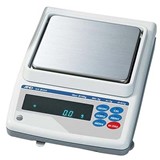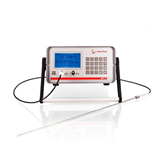Assistant Professor Sascha Schediwy, from UWA's School of Physics, said the technology was no more complicated than that used in the National Broadband Network modems currently being installed in homes and businesses around Australia.
Published in the international Optics Letters journal recently, the paper's co-authors include researchers from the Australian National University, Macquarie University, the National Measurement Institute, and Australia's Academic and Research Network (AARNET).
Professor Schediwy said the researchers had discovered how to transmit timing signals generated from state-of-the-art atomic clocks, found in just a small number of top research laboratories, to potentially hundreds of end users simultaneously on existing optical fibre networks.
"The transmission system preserves the super-stability of these clocks, which only lose or gain a second after 3 billion years, a length of time comparable to the age of Earth," he said.
"Previous research aimed to send the clock signals to a single location, limiting their use to research applications.
"However, as this new technique can be deployed alongside internet traffic, it is now possible to use existing fibre networks and make this available to the wider community."
Professor Schediwy said clocks were incredibly powerful tools for high-precision measurement, from fundamental research into Einstein's theory of general relativity to enabling cosmology with giant radio telescopes, such as the Square Kilometre Array.
They can also be used for exploration geophysics or to monitor climate change through measuring sea level rises and the thickness of ice sheets.
"In fact, time (or more accurately frequency) can be measured far more precisely than any other physical parameter," he said.
"This development could eventually lead to improvements in the performance of any application that requires stable time and frequency signals, including arrays of mobile phone towers, radar stations and internet exchanges.
"Atomic clocks are used much more commonly than people realise — they are integral in global positioning systems (GPS), telephone and internet exchanges, and financial systems."
Professor Schediwy said the technology could also potentially lead to massive improvements in indoor positioning systems (IPS).
"Because GPS signals have trouble penetrating buildings, there has been a lot of research into finding an indoors equivalent which could be very useful for tracking people and equipment moving around large buildings such as factories," he said.
"Since our technique makes it much easier to supply a synchronised, ultra-stable reference frequency to any location with a fibre, it could form the basis of a very accurate and precise 'time-of-arrival' IPS implementation."






